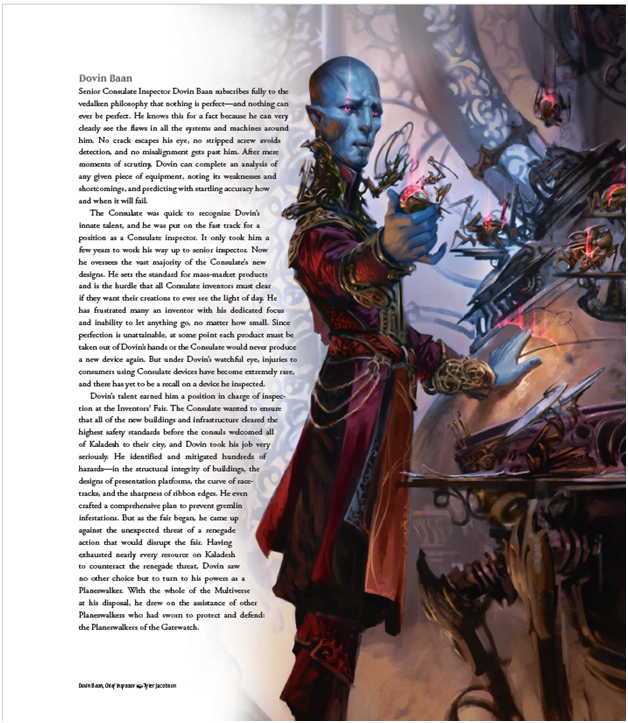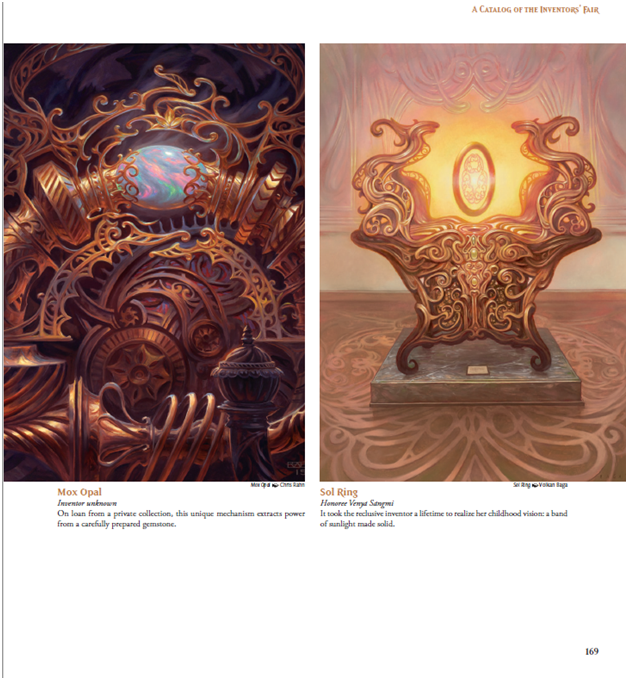Magic: The Gathering’s third installment of its art book series, focusing on Kaladesh, is soon upon us. Zendikar and Innistrad have been the previous printed volumes, all written by Wizards of the Coast creative team member, James Wyatt. I suppose writer is the best term for him, though it’s a bit simple to say all he does is write words. He’s a world builder, a narrative designer and the guy who breathes life into a magnificent art tome I keep on my coffee table for a few months at a time to see more than card art but also marketing imagery and concept art, like Daarken’s piece below.
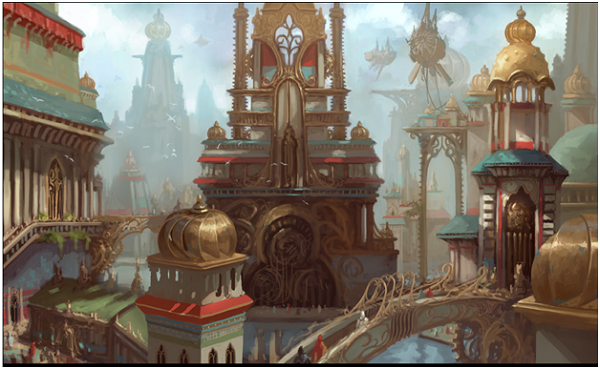
Kaladesh concept art by Daarken
Wyatt’s newest creation, that of which we as fans can see, is the The Art of Magic: The Gathering - Kaladesh, and it comes out in January. To showcase a little of the book, I was given two pages from it.
Let’s dive in!
Two Pager
Sure, it’s nearly an exact copy of his biography online, though for an archive, I welcome a physical copy of this. You think transferring your CD backups from college to DVDs is tough? Getting those to the cloud and not forgetting a password is bad enough. I like physical when it comes to Magic, in paper, cardboard and post-it notes, for me to quickly find information. Perhaps that separates me from being in Gen Y vs. a Millennial, where I want some semblance of stability when it comes to reference. Sometimes pulling out a laptop to check something doesn’t have the same impact as pulling out a thick, rich tome to see a definitive answer.
The second thing I see is that we don’t see a page number, though we know from the press release that it has 240 pages. Explaining each Planeswalker new to a plane is continued from previous iterations.
As we head to the second page preview I have, it’s a full page with two images from the Inventors’ Fair, the in-game flavor for explaining the masterpiece cards. They’re also on page 169.
The focus on the artworks like an exhibition guide, or an Inventors’ Fair would appear, is how they depicted them in the art book. Were we to visit a museum, the art book gives us a more in real life look at this fair. To get in the mindset of the intention of the art book, giving us a glimpse into Kaladesh, I visited my own cultural place of discovery, the Minneapolis Institute of Arts. I searched the galleries, trying to find similar creations of culture, of ingenuity and yet again, truth was stranger than fiction.
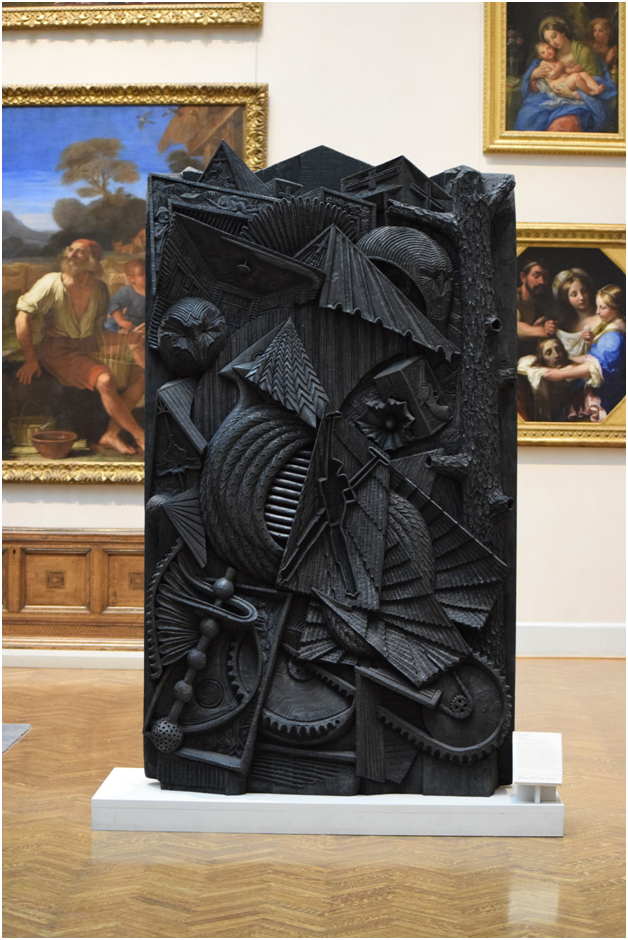
Songbird, 2009
Aaron Spangler
Carved basswood, black gesso and graphite
99 × 58 3/4 × 20 in. (251.46 × 149.23 × 50.8 cm)
GIFT OF MARY AND BOB MERSKY, 2016.35.2
Copyright © Aaron Spangler
Pulse by Tony Cragg is made from many pieces of kerto wood, creating a sense of torsion in the sculpture. Sure, Sol Ring creates mana from a mana source that’s complete fantasy, yet it looks so grounded. It even keeps us in reality by showing us a museum label. Notice, contemporary museum labels are either off to the side and raised like Songbird above or on the wall and out of eyelines, like Pulse below.
I asked in my Kaladesh art review, How much realism do you want in your Fantasy? To this looking at actual sculpture vs. the masterpieces, I can see Kaladesh is even more grounded in reality than I thought. Real art looks more fantasy than magical art. Fun, huh? The inventions of Kaladesh look believable, physical, with weight and mass.
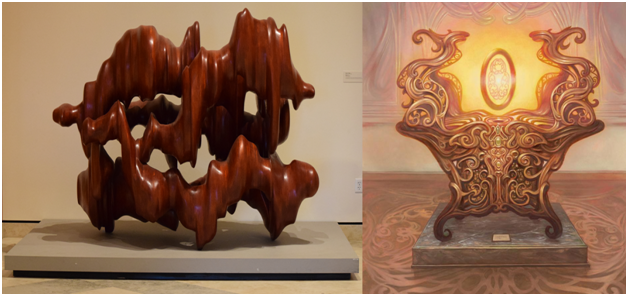
Pulse by Tony Cragg, © 2003 Tony Cragg
Photograph by Mike Linnemann, taken on 10/16/2016 / Sol Ring by Volkan Baga. © 2016 Wizard of the Coast, Inc
The second point I see is a question. Why is Mox Opal is next to Sol Ring in the book?
Huh?
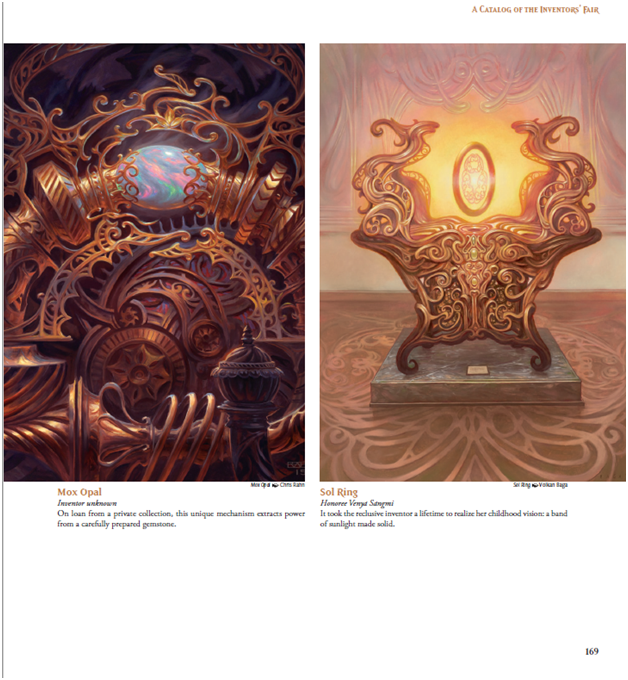
This means, that Sculpting Steel should precede Sol Ring alphabetically, as there are thirty masterpieces and yet, it does not.
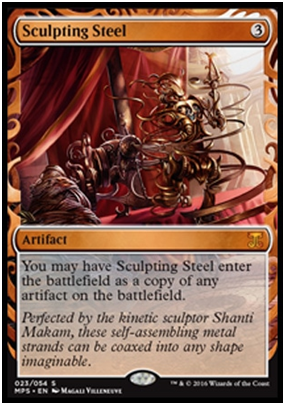 | 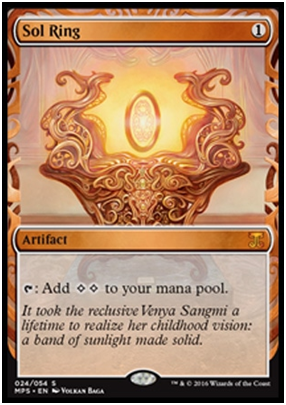 |
It also means that at two per page, at most, the masterpiece section in the art book only goes to page 184. At 224 pages for Innistrad and 240 pages for Zendikar, we can see the full amount of space used, a slimming via iteration and then an assumed expansion with concept art we have been asking for as a community. This is great news.
Looking at the masterpiece images in the book, they’re be in higher resolution than the 2x3” card art box and great for your coffee table, right in time for the holidays! They also look like intaglio prints, located at the back parts of old books where artworks would be located.
Pictures, Plates, Printmaking
To explain what intaglio, plates in art books, and what they mean, let’s have a brief art history lesson on printmaking.
Digital printing and even the inkjet in your room that you struggle to get resumes printing on every so often all go back to rather basic processes. While Johannes Gutenberg is credited as the movable press inventor, it was around long before in China, though that information wasn’t spread as rapidly across the globe and wasn’t as widespread with an efficient machine. Perhaps he is seen as a better marketer of the process, which is a bit more correct.
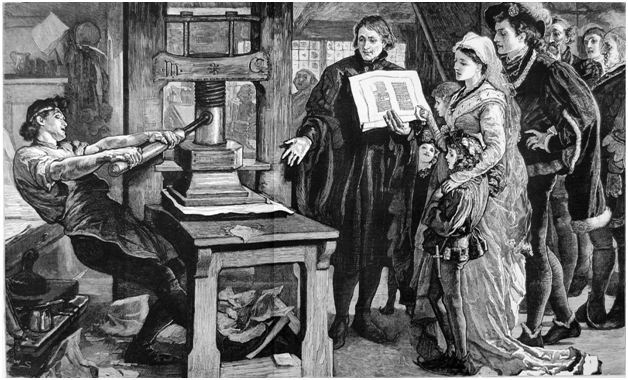
The Caxton Celebration - William Caxton showing specimens of his printing to King Edward IV and his Queen
You see, what brought Gutenberg into relevance was eliminating the need to handwrite page after page of religious texts by scribes. The cost was immense and it took forever. By being able to construct a book, page by page, made by gathering letter by letter, into twenty copies of a page, the time and cost savings paled in comparison to making knowledge and wisdom widely accessible. New thought could spread like wildfire, as could sermons, songs, hymns and analysis. Someone would gather up all the letters from little drawers, make a page, and then rub ink across a page. Putting a white page above the letters, someone could apply pressure to make an ink relief print or a letterpress print. Inventive name, I know.
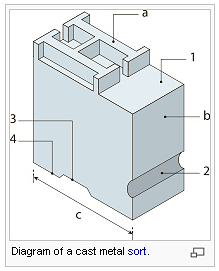 | 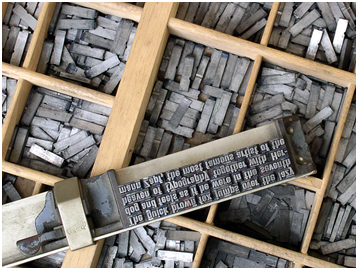 |
Images obtained via citrinitas.com
That’s great for letters, but images, how would that be possible? Well, it wasn’t. The intaglio process had to be invented first. It’s a printmaking term, pronounced “in-tal-io” and roughly refers to something that's depressed or incised opposite to a relief. Instead of putting ink on the letters, you put ink in the areas you dig away. See below, I can’t make it clearer than that. The red is the ink. The Masterpiece artworks look like intaglio pieces of art in the back of older books, using that concept in the Kaladesh art book.
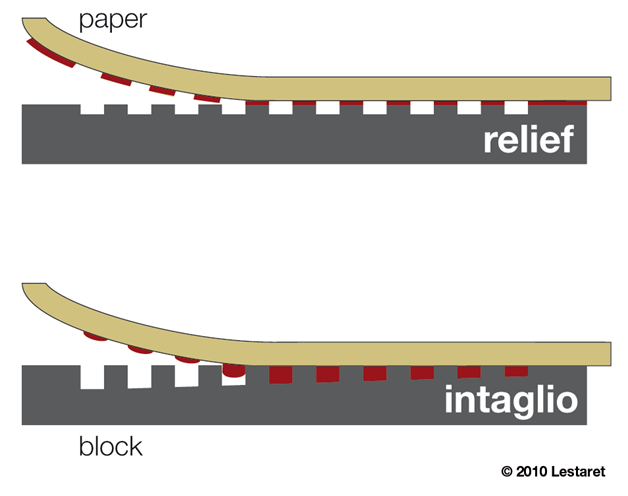
Image a phenomenal post on Lestaret.wordpress.com
This brings us to how they did an intaglio print. An image would be incised, scratched or engraved, on copper or steel plates. Use a sharp tool on steel and it’s an engraving. If you use incisions with acid to keep them smoother, softer visually, they’re called etchings on copper. Either way, ink is spread over the top of the plate, then wiped away until it’s smooth, leaving ink only in the scratched places. Ink is then forced onto paper via a high pressure process. This is why paper is depressed, or pushed lower and the edge looks to be raised. See below for again, amazing images from Lestaret to show the front and back of what a more traditional, older process of intaglio prints would look like.
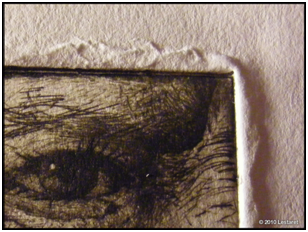 | 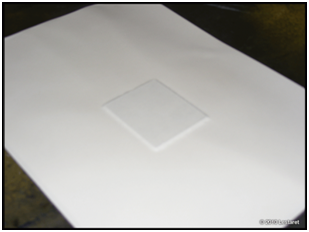 |
Sure, lithography differs, but we’ll get into how grease and water make for more realistic images. And yes, some people’s entire careers were to copy masterpieces like Norman Rockwell by cutting away on a stone to make a copy of a piece. Painstaking is an easy term to describe the process. While we haven’t the time today to go over every iteration of replicating images via prints, we should visit this again soon. Kevin Tong made a piece for Magic on Zendikar and would make for a fun article, right? Right.
The Kaladesh art book brings about a nod to the past of book art, a fun addition to a book that keeps improving every installment it creates. I look forward to seeing which concept art fill the back pages of the book. It’s the community's biggest want and I cannot wait to see raw creativity created out of the concept art team from Daarken, Steve Belledin, Cynthia Sheppard, Chris Rahn, and Tyler Jacobson who worked on creating Kaladesh.
Hope you enjoyed the little stroll in artmaking. Go out and buy the new Kaladesh art book. The more we like them, the chance will improve of going back to a previous plane like Dominaria!
—Mike
















